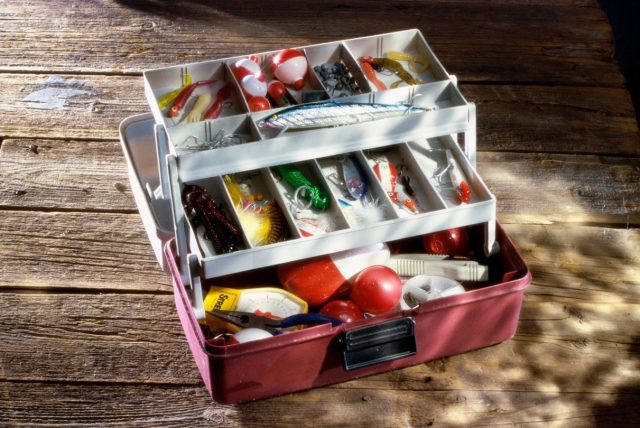Harold Preston Threlkeld understands that fishing is a timeless pastime enjoyed by people of all ages. Whether you’re a seasoned angler or a beginner, having the right gear is crucial for a successful and enjoyable fishing trip. Your fishing tackle box is the heart of your fishing setup, housing everything you need to lure, catch, and handle your fish. Harold Preston Threlkeld dives into the essential items every angler should have in their tackle box to be prepared for any fishing adventure.
Hooks: The Foundation of Fishing
Hooks are fundamental to fishing. Harold Preston Threlkeld explains that they come in various sizes and types, each suited to different fishing situations. From small hooks for catching tiny panfish to larger hooks for big game fish like bass or pike, a variety of hooks ensures you’re ready for any catch. It’s wise to carry a selection of single hooks, treble hooks, and circle hooks. Circle hooks, in particular, are known for their ability to catch fish without causing excessive harm, making catch-and-release more feasible.
Line: The Lifeline of Fishing
Harold Preston Threlkeld understands that fishing line is another critical component of your tackle box. The type of line you choose depends on the kind of fish you’re targeting and the fishing environment. The Monofilament line is versatile and suitable for a variety of conditions, while the braided line offers greater strength and is ideal for heavy cover or large fish. The Fluorocarbon line is almost invisible underwater and is perfect for clear-water fishing. Harold Preston Threlkeld recommends always carrying spare spools of different line types and strengths to adapt to changing conditions.
Lures and Baits: The Fish Attractors
Lures and baits are designed to attract fish. Artificial lures mimic the appearance and movement of fish prey. Harold Preston Threlkeld shares some essential lures include:
- Spinnerbaits: These lures create flash and vibration to attract fish.
- Crankbaits: Designed to mimic baitfish, they dive and wiggle to entice fish.
- Soft Plastics: Worms, grubs, and creature baits are versatile and effective.
- Topwater Lures: These float and create surface disturbances to attract predatory fish.
Harold Preston Threlkeld explains in addition to artificial lures, carrying live or prepared bait like worms, minnows, and dough balls can be highly effective, especially for species that prefer natural prey.
Sinkers and Weights: Achieving the Right Depth
Sinkers and weights help you get your bait or lure to the desired depth. Different fishing conditions require different weights. Split shot sinkers are small and adjustable, making them perfect for fine-tuning your rig. Bullet weights are ideal for Texas rigging soft plastics, while egg sinkers work well for bottom fishing. Harold Preston Threlkeld explains that having a variety of sinkers ensures you can adapt to deep or shallow waters and strong or weak currents.
Bobbers: Keeping an Eye on the Action
Bobbers, or floats, are essential for keeping your bait at the right depth and signaling when a fish bites. Harold Preston Threlkeld explains that traditional round red-and-white bobbers are a staple, but there are also slip bobbers, which are more versatile and allow for deeper water fishing. Bobbers come in various sizes; smaller ones are less resistant, making them ideal for smaller fish, while larger bobbers can support heavier baits for larger fish.
Swivels: Preventing Line Twists
Swivels are small but crucial components that prevent your line from twisting, especially when using spinning lures. Barrel swivels, snap swivels, and ball-bearing swivels are all useful. Snap swivels are particularly handy for quickly changing lures without having to cut and re-tie your line.
Pliers and Multi-Tools: Handling Your Catch
A good pair of fishing pliers is indispensable. They’re useful for removing hooks, cutting line, and crimping split shot sinkers. Multi-tools combine pliers with other useful features like knives, screwdrivers, and scissors. Having these tools on hand ensures you’re prepared for any situation that arises on the water.
Knife and Line Cutter: Essential for Every Angler
A sharp knife is essential for cutting line, cleaning fish, and preparing bait. A dedicated line cutter or pair of scissors can make quick work of cutting fishing line, especially braided line, which can be tough on regular scissors.
Tackle Storage: Staying Organized
Keeping your tackle organized is crucial. A well-organized tackle box with multiple compartments makes it easy to find what you need quickly. Tackle trays with adjustable dividers allow you to customize your storage space for different types of lures, hooks, and weights.
First Aid Kit: Safety First
Accidents can happen, so it’s wise to carry a small first aid kit. Include items like band-aids, antiseptic wipes, tweezers, and pain relievers. This kit can help treat minor injuries quickly, allowing you to continue fishing with minimal interruption.
Fishing License and Regulations: Staying Legal
Always carry your fishing license and be aware of local fishing regulations. Some areas require specific permits for certain types of fishing or have restrictions on catch limits and sizes. Keeping these documents in a waterproof container ensures they’re safe and accessible.
Optional but Useful: Specialty Items
Depending on your fishing style, Harold Preston Threlkeld explains that you might also want to include some specialty items in your tackle box:
- Leader Material: Stronger than your main line, leader material helps prevent break-offs when targeting toothy fish.
- Fishing Scale: For weighing your catch.
- Hook Sharpener: Keeps your hooks sharp for better penetration.
- Fish Gripper: For handling large or toothy fish safely.
- Measuring Tape: To ensure your catch meets local size regulations.
A well-stocked tackle box is the cornerstone of a successful fishing trip. Harold Preston Threlkeld emphasizes that by including these essential items, you’ll be prepared for various fishing scenarios and species. Remember, organization is key; keep your gear tidy and easily accessible so you can focus on what you love—fishing. Happy angling!








